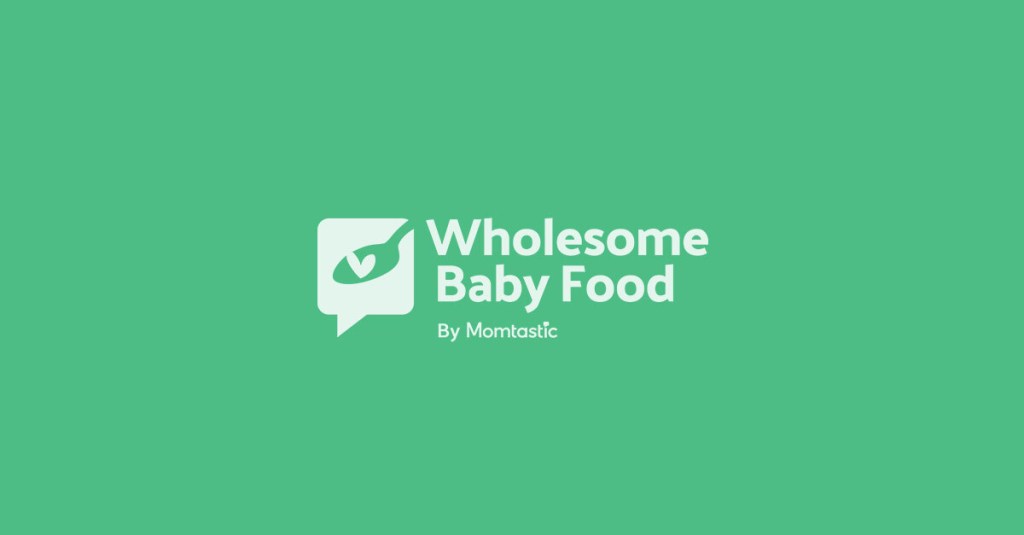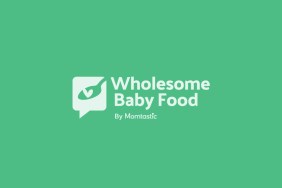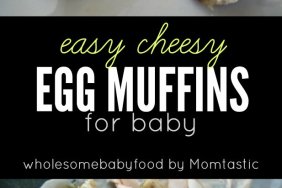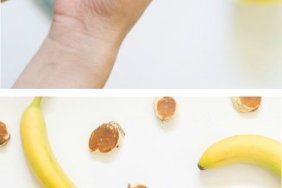Introducing White Potatoes to Baby around 8-10 months of age and White Potato for Baby Food Recipes
![]()
While white potatoes can be yummy and creamy, save them for later.
When Can my Baby eat White Potatoes?
Due to their lower level of important nutrients and a high amount of starchy carbohydrates, it would best to keep white potatoes out of baby’s diet until between 8-10 months of age. White potatoes do not typically pose an allergy risk so you should feel safe introducing them to your baby as early as 7 months of age. Many parents choose to wait until after 10 months of age to introduce baby to white potatoes so that baby gain more nutrients from other nutrient dense foods. When your baby is around 3 years of age, you may begin to leave the skin/peel on the potatoes though do be sure there is not a choking risk – be sure to thoroughly mash or cut up the skins.
The Goodness of White Potatoes for Babies
The nutritional value of White Potatoes is really not all that high. While white potatoes have respectable amounts of Vitamin A and Vitamin C, as well as potassium, their starch component is high. Carbohydrates account for 252 calories in a 1 baked white potato.
White Potato: (1 medium sized – baked)
| VITAMINS:
Vitamin A – 0 IU Vitamin C – 20 mg Niacin – 2.17 mg Folate – 14 mcg Vitamin B1 (thiamine) – .16 mgContains some other vitamins in small amounts. |
MINERALS:
Potassium – 610 mg Phosphorus – 78 mg Magnesium – 39 mg Calcium – 8 mg Sodium – 8 mg Selenium – 5.7 mg Iron – .55 mg Contains zinc, manganese and others |
How to select and store white potatoes for homemade baby food
![]() According to the EWG, white potatoes are one of the “dirty dozen” foods that are most highly contaminated with pesticides – purchasing organic white potatoes is a good choice when possible.
According to the EWG, white potatoes are one of the “dirty dozen” foods that are most highly contaminated with pesticides – purchasing organic white potatoes is a good choice when possible.
When selecting White Potatoes for homemade baby food, try to purchase Russet potatoes. These potatoes bake nicely and when mashed, do not turn to paste as quickly as other types of white potatoes. Ensure that the potatoes do not have sprouting or greening. For proper storage, be sure to keep them in a cool, dark, dry area.
Do NOT refrigerate white potatoes. Do not allow white potatoes to be stored in an overly warm area as they will shrivel and sprout. Sprouting potatoes should be tossed into the compost pile!
The best way to cook white potatoes for homemade baby food
Baking White Potatoes is the very best way to cook them. Baking White Potatoes, especially for baby food, brings out their natural flavor while retaining the most nutrients. You may also peel and cube then steam or boil White Potatoes if you prefer.
Try some of these White Potato Baby Recipes: 
White Potato Puree
Ingredients:
Any amount of white potatoes you desire
Directions: [Steaming]
Step 1: Peel potatoes and cut into small chunks
Step 2: Place chunks into a steamer basket you have inserted into a saucepan – add just enough water to see it rising up through the holes.
Step 3: Steam until tender, be sure to check on the water level.
Step 4: Reserve any left over water to use for thinning out the potatoes
Step 5: Place into your choice of appliance for pureeing and begin pureeing.
Step 6: Keep a close watch on the potatoes while you are pureeing as they may turn into “wallpaper paste” if pureed too much!
Step 7: Add the reserved water as necessary to achieve a smooth, thin consistency. You may also use breast milk or formula to make the puree if you wish.
[Baking]
Step 1: Preheat oven to 400 F degrees and thoroughly wash and scrub the potatoes
Step 2: Poke holes in the potatoes and run under water 1 more time (this will hasten the baking time!)
Step 3: Wrap wet potatoes in foil then place on the lowest rack in your oven.
You may not wish to use tinfoil due to a variety of personal reasons so skip the wrapping and simply put the potatoes into the oven.
Step 4: Bake until tender, approximately 40 minutes to 1 hour. Set a timer and turn the potatoes over half way through cooking time.
Step 5: Follow step 6 above
White Potato and Broccoli
Ingredients:
- Steamed broccoli
- White potato
Directions:
Step 1: Boil, steam or bake white potatoes until tender.
Step 2: Puree or mash as needed, adding water to thin if required.
Step 3: Add steamed broccoli and mix to combine
White Potatoes and Squash
Ingredients:
- 3 medium white potatoes
- 1 small butternut or acorn squash
Directions:
1. Steam or bake squash (winter) and white potatoes together until tender.
2. Puree as needed, adding water to thin if required.
3. You may also chop or dice for a finger food “salad”
Scalloped Potatoes Treasure Hunt
Make this and add peas, carrots, bits of meats or bits of soft cooked sweet potatoes or butternut squash. Let baby explore the meal and pick out the colorful (and nutritious) bits.
Ingredients:
- 5 large potatoes, peeled and thinly sliced
- 3/4 cup chopped onion
- 3 tablespoons butter or margarine
- 1/4 cup all-purpose flour
- 1 3/4 cups chicken broth
- 2 to 4 tablespoons mayonnaise (you can use whole milk yogurt if desired)
- 3/4 teaspoon salt (at your discretion)
- 1/8 teaspoon pepper
- Paprika
- 1 cup shredded Cheddar Cheese (optional)
Directions:
Step 1: Preheat oven to 325 F degrees
Step 2: In a greased 2-1/2-qt. baking dish, layer potatoes and onion. (I add a sprinkle of cheddar to each layer too)
Step 5: In a saucepan, melt the butter; stir in flour until smooth. Gradually add broth, mayonnaise, salt and pepper (we also add garlic and add the spices to suit our taste);
Step 4: Cook and stir for 2 minutes or until thick and bubbly. I find this takes about 15 minutes on medium heat and whisking every few minutes.
Step 5: Pour mixture over potatoes. Sprinkle with paprika. Cover and bake at 325 degrees F for 2 hours or until tender.
“French Fried” White Potato
Ingredients:
Any amount of potatoes you desire – I usually use 6
Directions:
Step 1: Preheat oven to 400
Step 2: Scrub potatoes clean and/or peel them if baby cannot handle the skins. Cut into sizes that will suit your needs or cut into strips that you may then cut down after baking.
Step 3: In a large bowl, add about 1/4 cup of olive oil. To this you may add pepper, garlic powder, basil or even oregano.
Step 4: Toss the cut up white potatoes into the bowl and stir so that the potatoes are drenched with the olive oil mix.
Step 5: Dump mixture onto a baking sheet and drizzle the remaining olive oil in the bowl over the potatoes on the baking sheet.
Step 6: Stir and swirl the potatoes on the baking sheet before placing in oven. Bake for approx 30-45minutes or until tender.
This is the basic way to do it and you can improvise as much as you want.
White Potato Treasure Hunt
Babies have a natural curiosity and need for exploration. Why not take advantage of this when serving baby meals? Help baby develop a strong pincher grasp by offering finger foods and self-feeding meals that encourage the use of the grasp.
For example, white potato mixed with squished peas makes a great finger food. Scoop the mix into a bowl and let baby have at it. This mix will help baby to develop a good pincer grasp as baby tries to fish the green peas out of the white mass of potatoes. Try carrots, broccoli, green beans and any other food that is colorful.
Foods Good to Mix With White Potatoes for Feeding to Baby
- Carrots
- Green Beans
- Parsnip
- Peas
- Winter Squash – butternut, acorn etc.
- Lentils
- Chicken
- Beef
- Pork
ORAL ALLERGY SYNDROME |
|---|
| The food on this page may be one involving OAS. OAS occurs when a person sensitive/allergic to pollen develops a reaction to fruits/veggies that have a similar type of pollen. Itching & swelling of the lips, the mouth and/or throat are typical symptoms. These symptoms normally appear within minutes of eating the offending food and may be worse during the spring and fall pollen seasons. Rarely is an OAS life threatening. Click below to learn more. |
| Birch Pollen Allergies |
| Birch pollen allergies are associated with apple, carrot, cherry, pear, peach, plum, fennel, walnut, potato, spinach, buckwheat, peanut, honey, celery, and kiwifruit. |
| Cedar Allergies |
| Japanese cedar allergies are associated with melon, apple, peach and kiwifruit. |
| Mugwort Allergies |
| Mugwort allergies are associated with celery, carrot, spices, melon, watermelon, apple, hazelnut, and chestnut. |
| Grass Pollen |
| Grass pollen allergies are associated with melon, tomato, watermelon, orange, rice and cherry. |
| Ragweed Pollen |
| Ragweed allergies are associated with melon, chamomile, honey, banana, and sunflower seeds. |
| Latex |
| Latex allergies may be cross-reactive to banana, avocado, kiwi and papaya. |
![]() Remember, always consult with your pediatrician regarding introducing solid foods to your baby and specifically discuss any foods that may pose allergy risks for your baby.
Remember, always consult with your pediatrician regarding introducing solid foods to your baby and specifically discuss any foods that may pose allergy risks for your baby.
![]() This site complies with the HONcode standard for trustworthy health information:
This site complies with the HONcode standard for trustworthy health information:
verify here.



